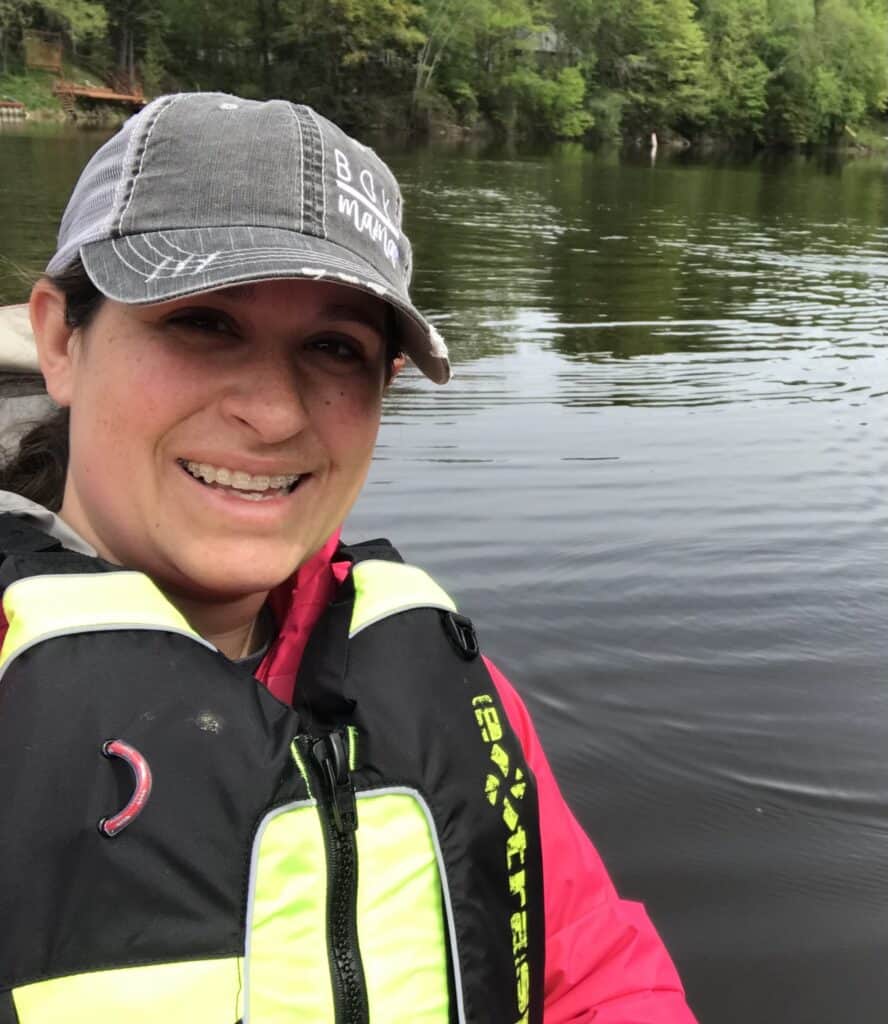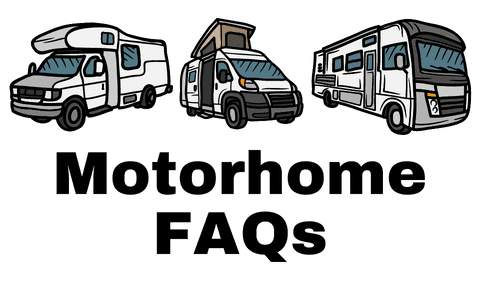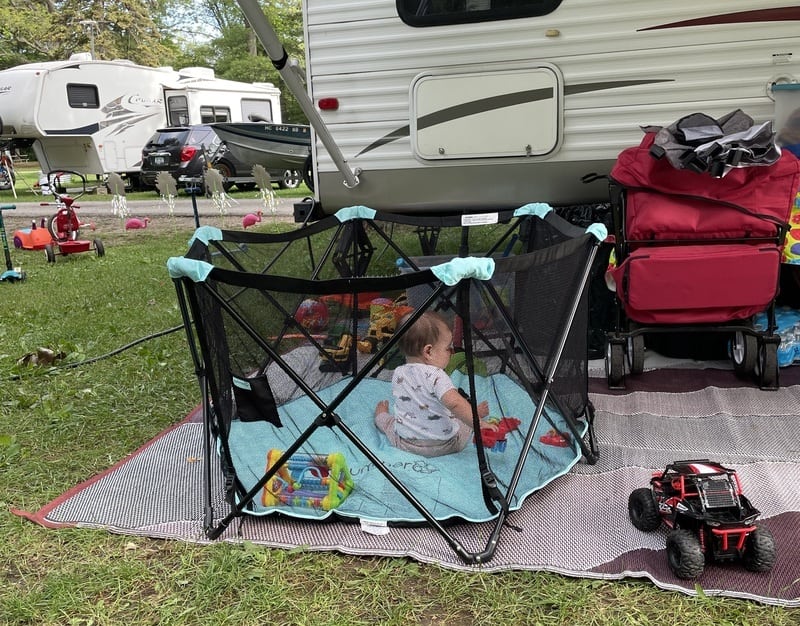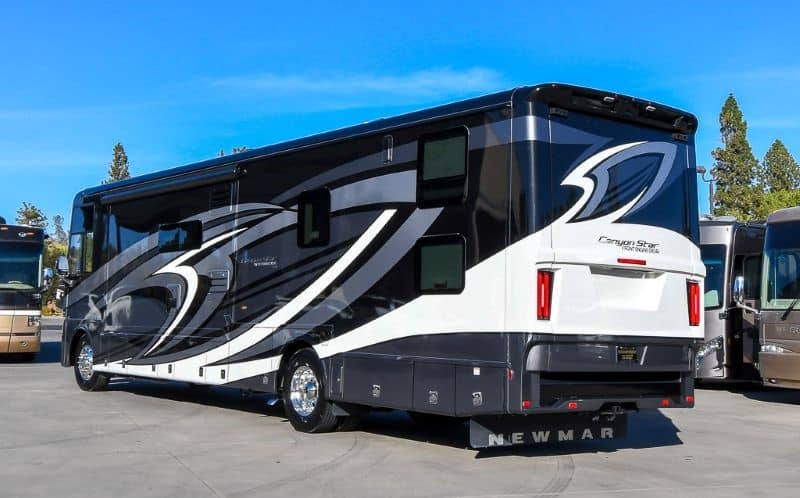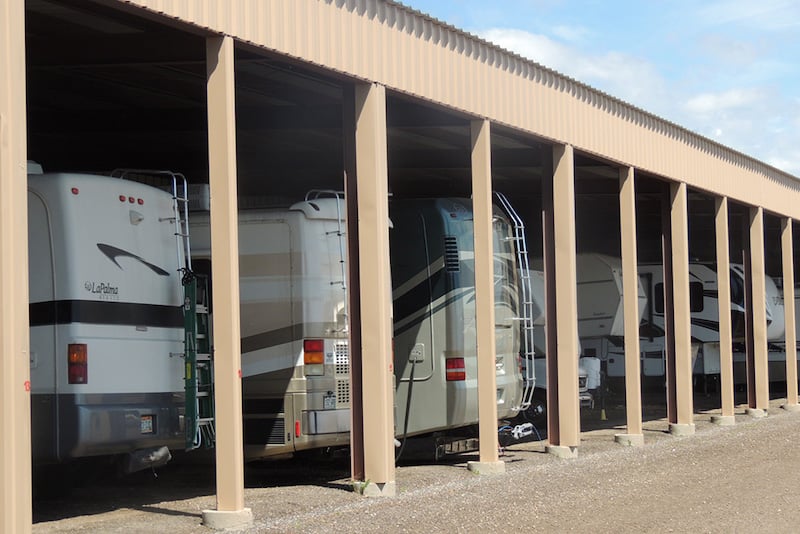If you’re first-time parents, you’ve probably wondered “How do we toddler-proof the RV?” It’s an important question since hitting the road with young children is an entirely different ball game than adult-only traveling.
Toddlers are curious, adventurous, unpredictable, and often inflexible. Parents should be concerned. RVs don’t come toddler-proofed after all. It’s up to you to make the camping experience safe for your little ones.
But don’t let your concerns discourage you. When you plan and prepare appropriately you can make family RVing not just safe, but also fun for both you and your little ones. Toddler-proofing your RV is the first step in making unforgettable family memories so read on to get started.
At What Age Can You Start RVing With Children?
There is no minimal age for RVing with kids. We took our children when they were each just six weeks old. RVing with a little one is really not much different than caring for a child in a traditional home. In fact, many full-time RVing families bring their newborns home to an RV.
As with all things parenthood-related, there will be a learning curve. RVing with children is no different. You’re reading this article, so you’re already on the right track.
To prepare yourself as much as possible seek to learn from parents that have gone before you. You’ll find that many seasoned RVing parents have a host of stories to tell about the mistakes they’ve made. Learn from their experiences and make a list of how to toddler-proof your RVing so you won’t make the same oversights.
Another tip is to plan a short excursion, close to home, for your first RV trip with toddlers. That way, if you forget anything it’s easy to run back home to grab it.
15 Ways To Toddler Proof Your RV
Before you embark on your first trip with young children, check out these suggestions for how to best toddler-proof your RV.
1. Bunk Beds And Sleeping
When you RV with a toddler, one of the most important things you’ll need is a safe place for your tot to sleep. This can be tricky since so many sleeping arrangements in RVs are bunk beds that are elevated up off the floor.
Toddler-proofing RV bunks is complicated by the fact that there are no box springs. This means a traditional bed rail won’t work. Fortunately, there are other alternatives. Many young families toddler-proof the RV bunks with a retractable mesh baby gate.
Another great option is to place a large pool noodle between the mattress and the fitted sheet. This method creates a pseudo bed rail built right into the sheets. It works especially well on dinette or sofa beds where there is no place to anchor a baby gate.
Note, that while both of these methods work well for creating a safe sleep space for a toddler, they don’t necessarily apply to a baby. Babies need a firm mattress with no loose bedding.
Some RVers have transformed a bunk bed into a baby crib by replacing the mattress and adding a crib rail or rigid baby gate. Others simply bring along a pack-and-play for their infant.
2. Night Time Comforts
Don’t forget to pack essentials from home for the campground as well. Be sure to bring along any comfort items your toddler might need, like a special blanket or stuffed animal.
Packing a sound machine and night light is also a good idea. The soothing sounds will help drown out campground noise and make bedtime less distracting.
Nightlights will help your little one know where they are. Always place one in the bathroom for midnight potty breaks and in the main living space so they can find their way around.
Remember, that just because you’re on the road, doesn’t mean you’ll want to call it a night when your little one does. Be sure to bring a baby video monitor so you can keep an eye on your toddler, even from outside the RV.
If you forget your baby monitor while RVing, there are other, less-efficient options. The best workaround we’ve found is to set up a neverending Facetime call between one adult’s phone in the camper, and one outside.
When you remember the important things, bedtime on the road is a lot easier to manage.
3. Stair Safety
When brainstorming how to toddler-proof your RV, the outside stairs are easy to overlook. However, this is one area that needs attention before embarking on a trip with little ones.
Small children can easily fall out of an RV by pushing on the screen door. Some are observant enough to use the lever. Others may be strong enough to bust through the actual screen.
Regardless of their method of escape, just about every RVing parent has a cautionary campfire tale about the time their little tyke fell out of the camper. I can still tell you the campground we were at and the ER we had to take our three-year-old to when he tumbled out of our very first family camper.
A great option that helps toddler-proof your RV stairs is a security handle. This handle was designed to add stability for anyone navigating the stairs, but it has a hidden benefit as well.
Simply fold the handle to the drive position, and it will block the door from opening more than a few inches. Folded-in, it also partially covers the screen preventing unintentional falls that way as well.
When you need to use the door, simply push the lever back to its camp position. Bonus, now you have a handle everyone in your travel party, especially unsteady toddlers, will appreciate.
4. Screen Door Security
How to toddler-proof your RV stairs and the screen door go hand-in-hand. In addition to installing a security handle, a pet screen protector works remarkably well for toddlers too.
New walkers are especially prone to screen door falls as they often try to use the screen door to balance or pull themselves up. With a protector like this, your little one won’t be able to tumble through the screen, even if they try to use it for support.
Another door hazard few first-time RVing parents think of is that your little angle could, and likely will, lock you out.
Once your little one notices that red lock switch, they are bound to want to play with it. It’s just so colorful and enticing. I can’t tell you how many times our youngest has accidentally locked us out when we thought we were just stepping outside for a second. Now we keep the RV keys on the outside table or in a pocket at all times.
5. Cabinets And Drawers
Cabinets and drawers are one aspect of my RV that I didn’t need to toddler-proof. This is because the mechanism that RV manufacturers use to prevent doors and drawers from jostling open as you travel down the road also serves as a toddler deterrent.
My five-year-old can just now open the lower cabinets, and anything over his head he still struggles with. My two-year-old is perpetually frustrated by his inability to force our camper cabinets open.
But never fear, if you have some sort of hulk-like toddler who can muscle these compartments open you can always use an adhesive cabinet lock. These work well to secure doors and drawers without causing permanent damage to your rig.
6. Stoves And Ovens
Just as you do at home, you’ll need to toddler-proof your RV’s oven and stovetop. Fortunately, the same safety products you use at home work in a motorhome as well.
You’ll want to purchase an adhesive oven lock. Stove knob covers are also a must if you have a gas range. Don’t worry, stove knob covers won’t slow an adult down in the kitchen. But they will prevent little ones from harming themselves or their surroundings.
7. Toilets
It is imperative that you toddler-proof your RV toilet as RV plumbing systems are significantly more sensitive than in sticks-and-bricks homes. The tiniest foreign object flushed down the RV toilet could obstruct the discharge of waste from your tanks and be nearly impossible to retrieve.
Fortunately, all you need is a simple toilet lid lock. Save your receipt, because toilet locks are intended for use on porcelain thrones. It may be tricky to find which lock sticks best with the plastic in your RV toilet.
8. Sinks Showers and Tubs
Why does an RV sink need toddler-proofing you might ask? The answer is twofold. First, sinks are a source of hot water and therefore burns. Always make sure that the temperature on your RV hot water heater is reduced to prevent scalding.
The second reason is to prevent floods. Two summers ago my husband and I learned this lesson the hard way. We stepped into our RV and found a half-inch of water. Quickly we realized that one of our darling children had left the sink running after using the restroom. What’s more, the stopper had either fallen or been placed in the sink. There was water everywhere!
Fortunately, we caught the problem within minutes. We were able to soak up the water, even if it meant removing access panels and slitting the weatherproofing. We even busted out every fan and space heater we had to remove any lingering moisture. If there’s a silver lining at all, it’s that I now own every single color beach towel offered from that particular camp store.
Anyway, the moral of my story is to always remove the sink and tub stoppers when RVing with little ones. You don’t have to get rid of them, but you do need to place them somewhere out of easy reach.
9. Electrical Outlets
Outlet covers are one of the more obvious necessities when toddler-proofing your RV. Still, planning your first RV trip with kids can be chaotic, and sometimes even the most obvious things get overlooked.
Although outlet covers are inexpensive they can’t often be found at camp stores. If you forget the outlet covers, head to the nearest hardware and pick up some painter’s tape. Placing a strip of tape over each outlet is a great alternative if you ever find yourself in a jam.
10. Switches And Controls
Toddlers are the best little chaos creators on the planet and playing with a motorhome’s control panel can cause all kinds of chaos. You should expect that your little one will be drawn to these buttons and switches, and toddler-proof them in advance.
One option is a locking switch cover. Simply find one that fits and install it over your control switches and there is no way your little one will be able to mess with anything.
Another less secure, but more aesthetically appealing option is to hang a hollow-backed canvas picture over your switches. If you use a command hook and picture wire, you’ll be able to discretely slip your hand behind the picture to access the controls without having to remove or uninstall anything.
11. Secure Cleaning Supplies
Just like at home, you’ll want to make sure your cleaning supplies and chemicals are out of reach. This can be particularly tricky in a motorhome where storage space is limited.
I store the cleaning supplies in the uppermost cabinet in our bathroom. Outside, locking storage compartments can also be a great option.
12. Sharp Edges
There’s something counterintuitive about a vehicle moving down the road and sharp edges, and RV manufacturers seem to know this. Fortunately, this means most motorhomes don’t have many sharp corners.
Still, there may be some edges that still pose a threat to new walkers. Edge protectors work well to protect a toddler from bumping into the edge of the dinette or the bottom of the top bunk.
13. Clear Floorspace
You might be wondering, what about floorspace could possibly need to be toddler-proofed? Well, when you have a toddler, you’ll soon find that there is a lot that needs protecting.
First, make sure that you find a place to keep dirty shoes out of your little one’s reach. The oddly shaped cabinet in the entertainment center works well in our RV.
Trash cans should also be kept behind closed doors unless you want little hands rummaging through them. If you have pets, be sure to keep their food and water dishes put away when not in use.
To toddler-proof your RV you basically want to keep the floorspace clear of anything and everything.
14. Campfire Safety
Campfire safety should be at the forefront of your mind when planning how to toddler-proof your RVing. Fire pits can remain hot for hours or even days. Teach your children to never go near, or stick anything in, a fire pit even if it looks like there are no flames.
If your little ones will be hanging out around the bonfire with you, always teach them to walk behind chairs, never in front. It’s far too easy to trip and fall, especially in the dark. On that same note, be sure to remove any obvious tripping hazards like sticks and rocks.
Consider using a camping high chair as a bonfire chair for your toddler. The tray and straps add an extra layer of protection, preventing a little one from unexpectedly getting up or lunging for the fire.
15. General Safety For The Campground
How you toddler-proof your RV should extend to all of your outdoor living space, not just the bonfire. Traffic, water, and dogs are all hazards that can be found at almost every campground.
Be extra vigilant to keep your little ones safe. This vigilance starts with your campsite selection. Whenever possible, choose a site away from high-traffic areas like the campground entrance, bathrooms, and dump stations.
You’ll also want to avoid bodies of water like lakes, rivers, and even pools. Check campground maps ahead of time to choose a site away from traffic and drowning hazards.
Dogs can be another unexpected danger you find in a campground. While you won’t be able to plan ahead to avoid other’s pets, you can teach your little ones animal safety. Emphasize to your children that they must be accompanied by an adult and that they must ask permission, before approaching or petting any animal.
You may also want to invest in a portable plastic baby gate enclosure. These are great when used as playpens. They can also be opened and used to create a fence dividing your campsite from the rest of the campground.
Finally, if you’re camping in a group, try parking all of the RVs in a circle. In doing so, your RVs will form a pseudo wall. Not only will this help prevent kids from wandering off, but it also has the bonus effect of creating one large communal play area in the center of all the campsites.
Do Campgrounds Have Daycares?
You may get lucky and be able to find a campground that offers child care. But these are few and far between. The idea of a “nomad nanny” is also gaining steam in some RV forums.
RVers may even consider using vetted online websites to secure the occasional babysitter. But for the most part, it’s still logistically very hard to find reliable childcare while on the road.
If you’re traveling in a group, a better option might be to take turns watching each other’s children. This allows each set of adults to have some child-free time while knowing their kids are being well cared for by other members of their travel party.
If you can’t find a sitter, and you need some way to occupy your little ones, ask about any campground-hosted kid activities. Whether it’s a scavenger hunt or painting class, you’ll likely find something to keep them busy.
Is It Safe To Leave Your Toddler In The RV While You’re Outside?
Every parent’s comfort level around this question is going to differ. While we can’t tell you how to parent, but we can tell you a few tried and true campground safety rules we live by when stepping outside the RV.
- Never leave your own campsite
- Always make sure at least one adult can see each RV exterior door at all times
- Check-in frequently
- Use a baby monitor and have it on you at all times
- Make sure the interior of the RV is toddler-proofed
- Make sure smoke detectors and carbon monoxide detectors are working
What Type Of Campground Is Best For Children?
Any type of campground can yield family fun. But some campgrounds will be more kid-friendly than others. To make your RV trips with little ones easiest, you may want to look for a campground with:
- Planned activities
- Playgrounds or other areas for young children
- Lots of different options for fun (sports courts, hayrides, outdoor movies, etc.)
- A kids’ pool/water area
Many kid-centric campgrounds will even have themed weekends throughout the year. Be on the lookout for these special events to enhance your family’s fun!
Final Thoughts About Toddler Proofing Your RV
RVing with young children can be a daunting prospect. After all, you have to consider and plan more than when you were in an adult-only travel party. While you should be prepared, don’t be deterred.
Camping with children can be both fun and rewarding. While it’s a different experience than child-free travel, it’s also wonderful. Knowing how to toddler-proof your RV is the first step in creating family memories that will last a lifetime.
Related Reading:
– Essential Motorhome Spare Parts & Tools To Carry
– When to Turn on Your RV Tank Heaters
– Why Does My RV Furnace Blow Cold Air?
– How Often Do Motorhomes Break Down?
About the Author:
Laura is a part-time RVer and a full-time mom of three. Long-time campers and RVers before children, Laura, and her husband have fallen even more in love with the RV lifestyle since becoming parents to a child with food allergies.
Having her own kitchen on wheels makes her RV trips amazing. Laura is passionate about finding ways to make traveling with young children fun, easy, and attainable.
